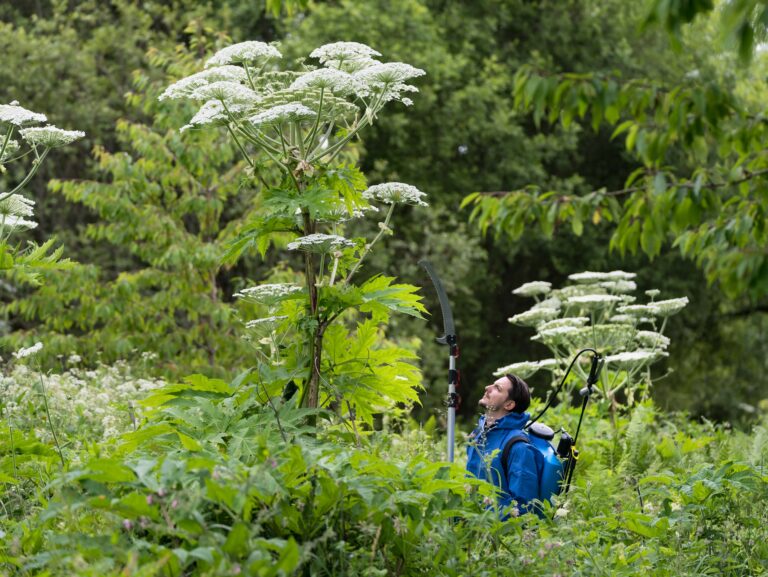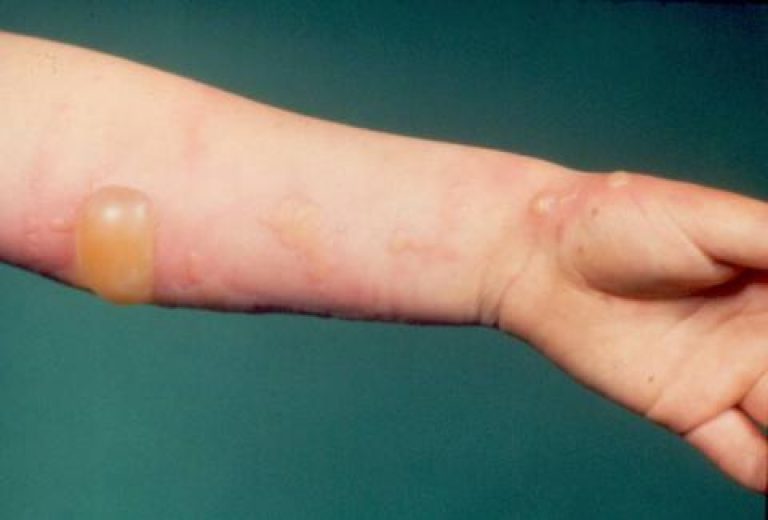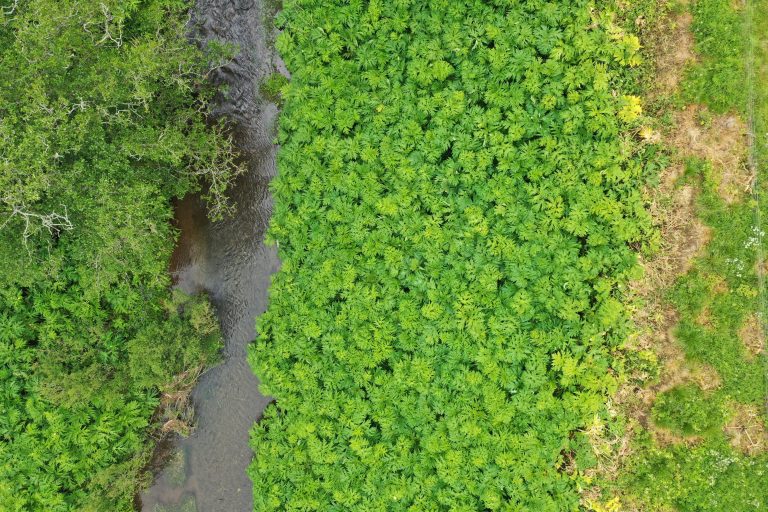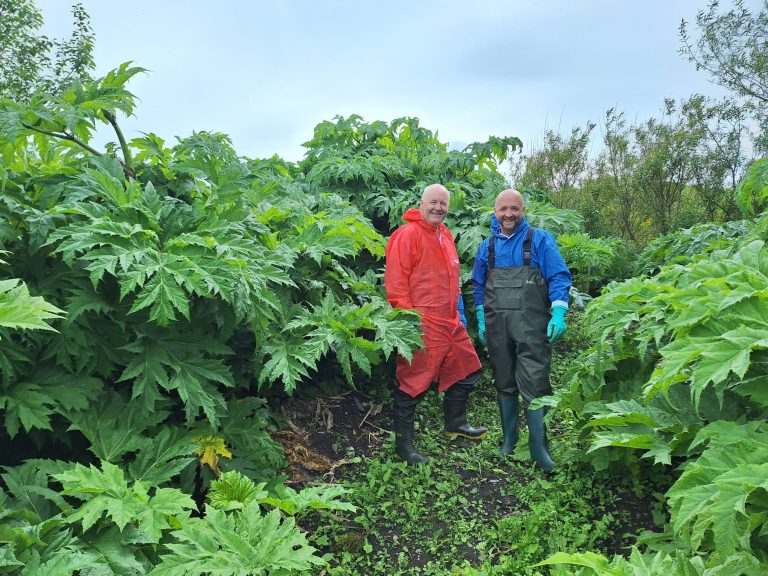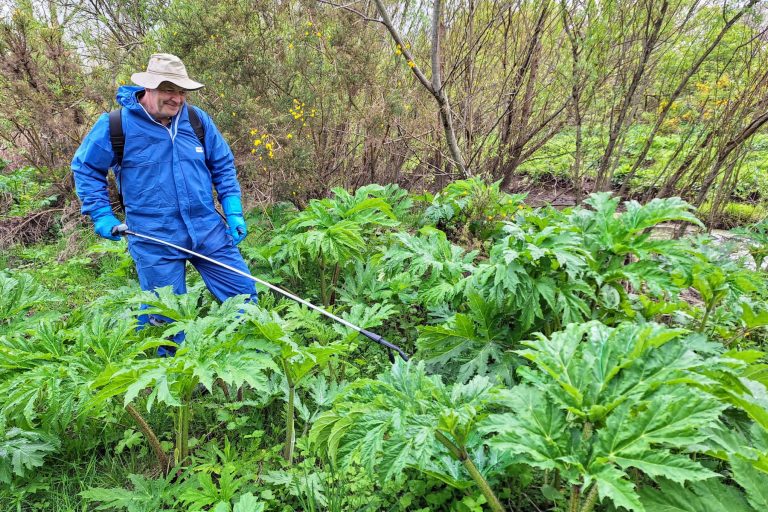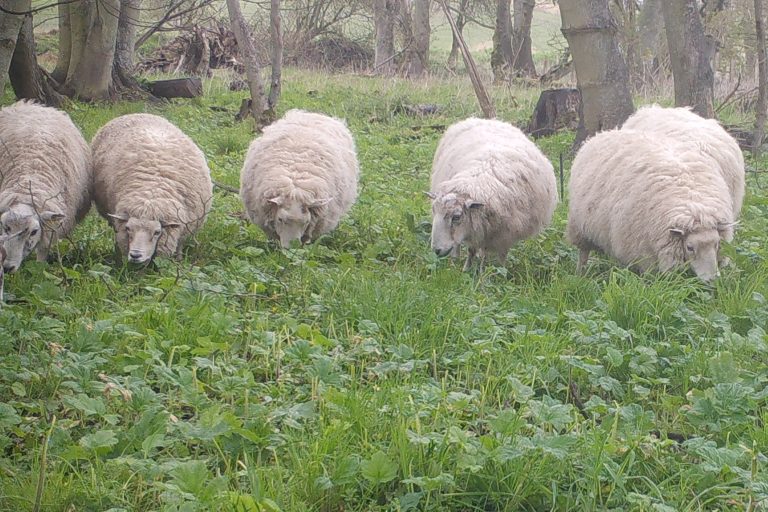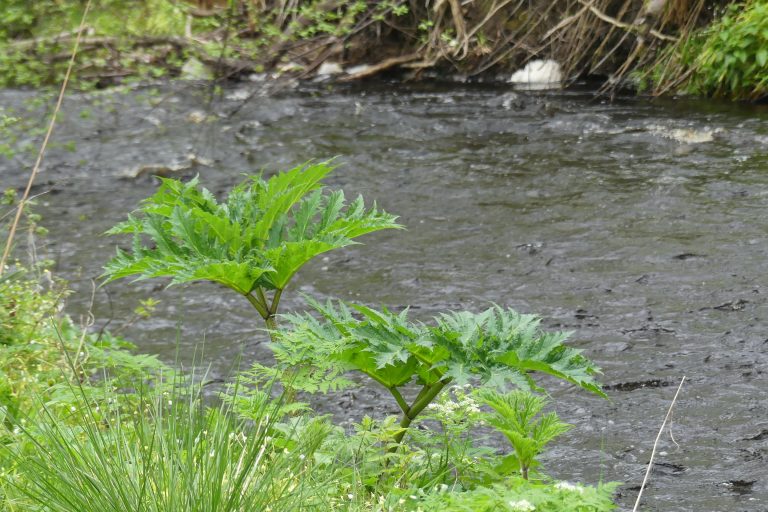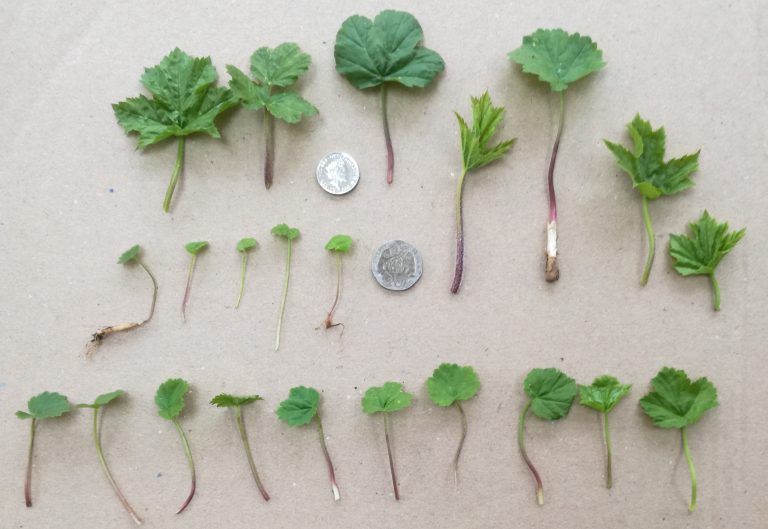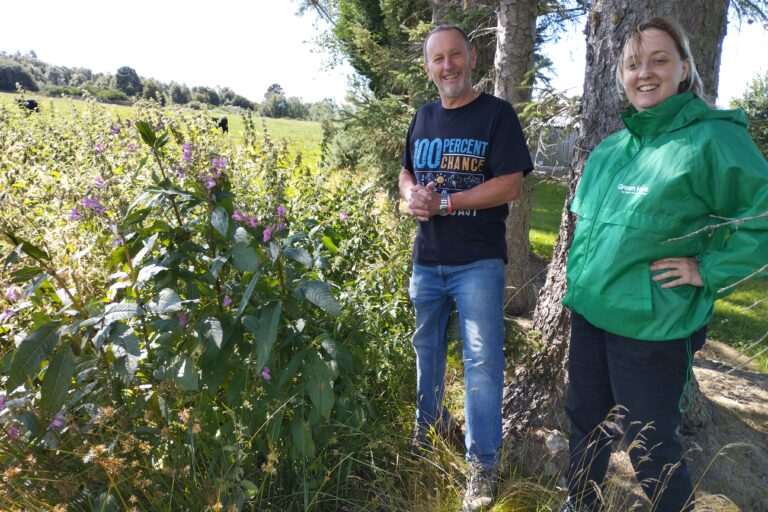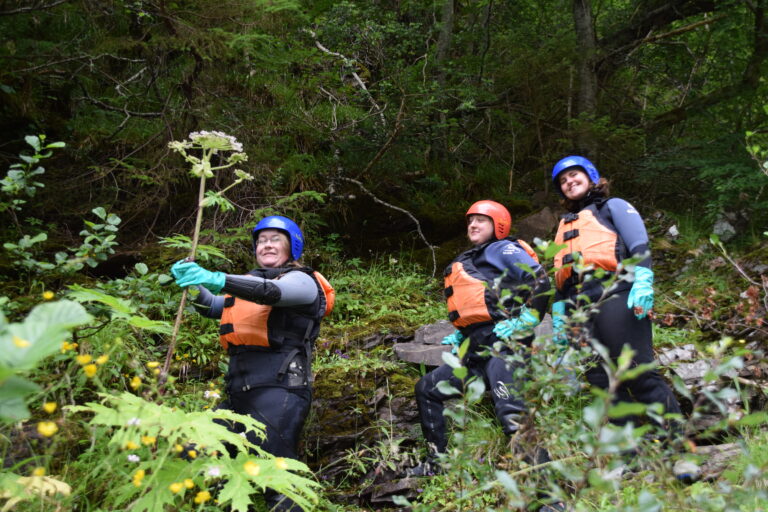Meet the plant
Giant hogweed (Heracleum mantegazzianum) is an umbellifer (member of the cow-parsley family) with flowering stems typically 2-3m in height bearing white flower heads up to 80cm across. The lower leaves are often 1m more in size and distinctively spiky.
It grows by lowland rivers, in rough pastures and on wasteland and is widespread throughout Great Britain.
It was introduced into gardens as a curiosity around 1820 and was often planted by rivers and ponds.
Giant hogweed reproduces entirely by seeds and is monocarpic i.e. it reproduces only once in its lifetime, normally after 2-3 years. Plants are able to self-fertilise and each can produce 20-50,000 seeds – some of which survive more than 10 years in the soil.
